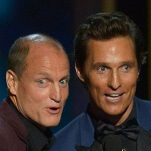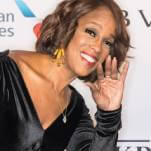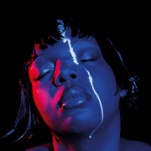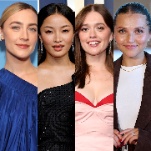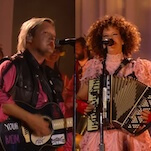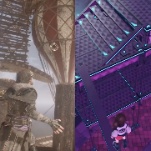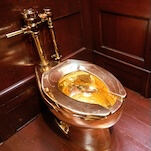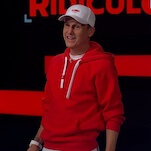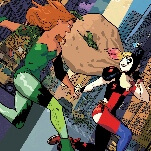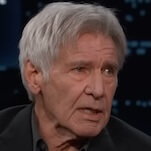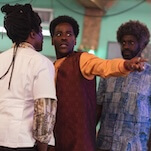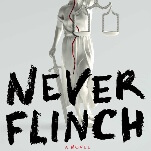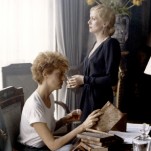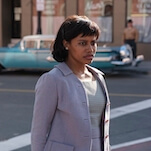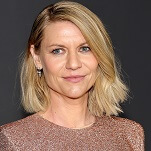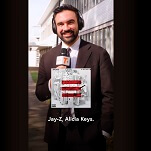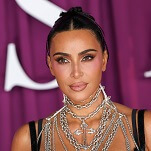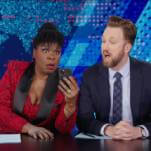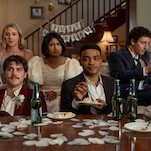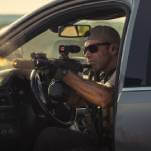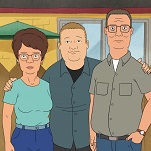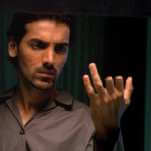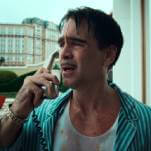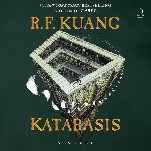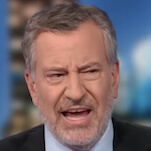More Lee and Ditko, this time working together on the adventures of a serene mystic who works behind the scenes to keep extradimensional demons at bay. The character resonated with many '60s teens, who identified with Dr. Strange's spiritual quest, as well as the metaphorical implications of his shadow-realm–so like and yet unlike the all-encompassing domain of the men in grey flannel suits. Lee and Ditko's Dr. Strange stories are still enjoyable today because of Lee's faux-arcane lingo ("By the Hoary Host of Hoggoth!") and Ditko's surreal dreamscapes, which are as brain-bending as anything by comics' premier visionaries of the interior, George Herriman and Victor Moscoso.
6-7. Essential Fantastic Four Vols. 3-4
Marvel's trademark style–conflicted heroes, epic struggles, circus atmosphere–was laid out in the earliest issues of Fantastic Four, though the series itself was fairly leaden in the early going, as Lee and Jack Kirby fell back on Golden Age comics formulas. About three years into the run, just before the issues collected in Essential Fantastic Four Vol. 3, Kirby began to solidify his blocky penciling style, and he and Lee began exploring the cosmic. In the third volume, the FF have their first encounter with the planet-eating Galactus and his tortured herald The Silver Surfer, and by the fourth volume, the team is regularly beating down baddies from outer realms and innerspace, all while continuing to bicker among themselves and question their ongoing commitment to heroism. By the end of this stretch, Lee and Kirby had developed their own formulas, which everyone else would fall back on for the next 40 years.
8. Essential Silver Surfer Vol. 1
Cut loose from Galactus, The Silver Surfer got his own series, and heralded an evolution both in Marvel comics and the culture at large. Where first-wave Marvel heroes like Daredevil, The X-Men, Iron Man, and Hulk (all of whom have their own fine Essentials volumes) were flawed conformists, forced from the mainstream by their respective afflictions, The Silver Surfer was more of a cultural outsider, bound to this world against his will. Stan Lee was at his overwrought worst in a lot of the stories collected in this volume, but John Buscema's art is dynamic and poignant, capturing the dilemma of a peaceful creature forced into action by the petty concerns of thankless humanity. No wonder the hippies dug him so.
9. Essential Howard The Duck Vol. 1
The Silver Surfer ended up being the model for a wave of new and revamped heroes that dominated the '70s, even across the street at Marvel's "Distinguished Competition." The Me Decade's superfolk were cynical, socially aware, and so over the whole authority thing. The tenor of the times was captured best by Steve Gerber's funny-animal deconstruction Howard The Duck, who was like The Silver Surfer–"trapped in a world he never made"–only without the pomposity. Ostensibly a superhero parody, featuring villains like The Deadly Space Turnip and Dr. Bong, Howard The Duck doubled as Gerber's frustrated yelp at everything going wrong with American culture, from the politics of self-help to the thoughtless druggie appropriation of ancient sacred rituals. In a way, Howard The Duck was an updated version of Dr. Strange, with the earlier series' implicit social criticism made achingly plain. Also, Kiss guest-stars.
10. Essential X-Men Vol. 2
The '60s version of The X-Men never found a consistent theme, but when writer Chris Claremont and artist Dave Cockrum helped revive the team in the mid-'70s, they picked up on the industry-wide trend of heroic outsiders, and made their merry band of mutants not so merry. The "New" X-Men were angrier, moodier, and more harried, as they zipped from one life-threatening adventure to the next with few breathers. They were also just as middlingly popular with readers as the original X-Men, until Cockrum left the book (about midway through the issues collected in Essential X-Men Vol. 1) and was replaced by the more polished and dazzlingly detail-oriented John Byrne. Claremont and Byrne went on a white-hot run, the bulk of which is captured in the second Essential X-Men volume, as they tied the "outcast hero" trend to Lee and Ditko's relentless, cliffhanger-heavy Spider-Man pacing. The duo created a zeitgeist-capturing juggernaut that, for better and worse, was to quirky early-'70s superhero comics what Jaws and Star Wars were to pensive early-'70s American movies. There have been some worthy new Marvel series in the decades since, but with the Claremont/Byrne X-Men, the Marvel hero arguably mutated to its final, superior form.


